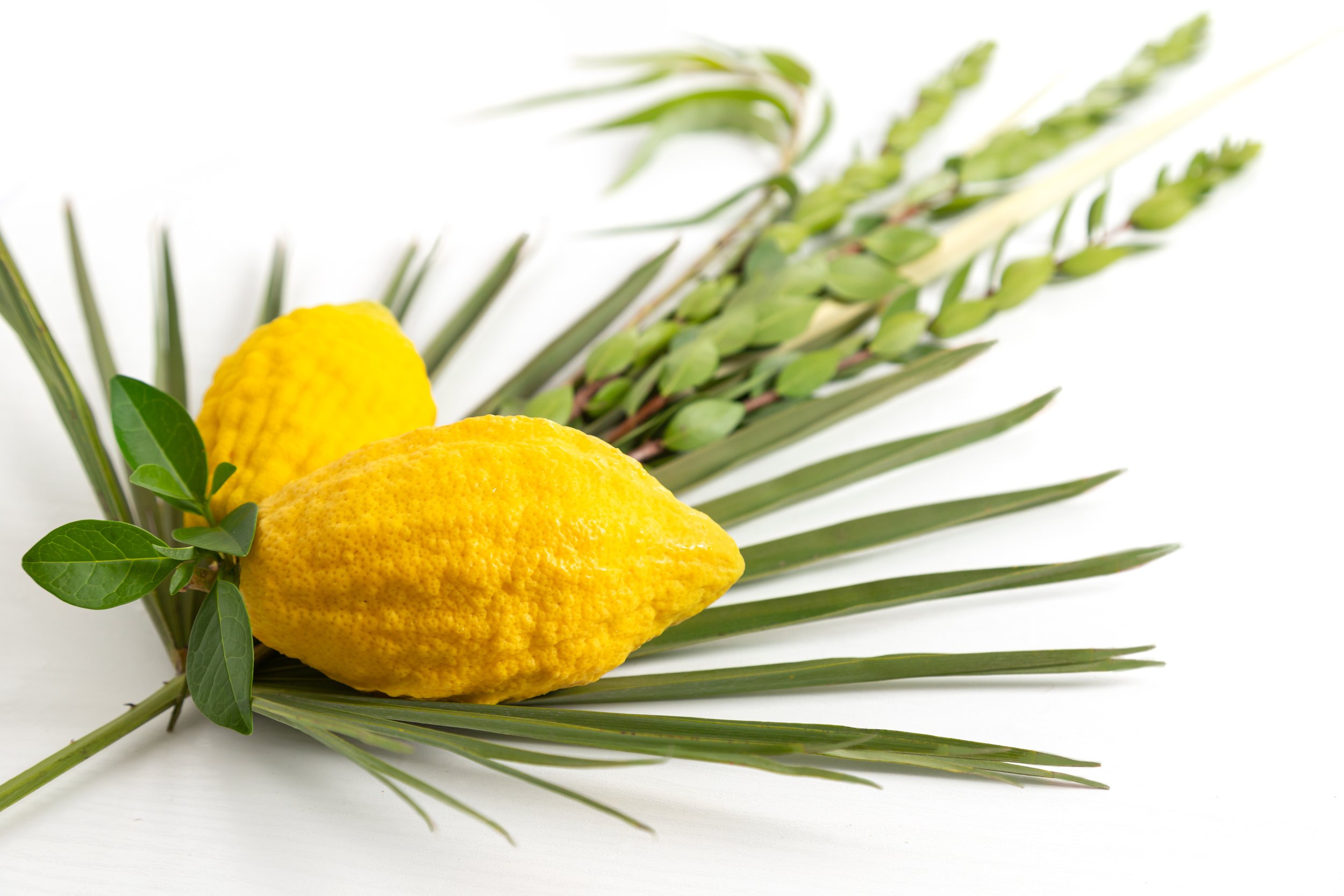Sukkot
A Celebration of Joy and Unity
Energy of Surrounding Light
he holiday of Sukkot is a unique period following Rosh Hashanah and Yom Kippur where we have an opportunity to draw down and experience the energy of "Or Makif", the surrounding Light. Through our spiritual work during the first 10-days of Tishrei, we were able to access our personal "holy of holies" and the realm of Binah consciousness, the womb of G-d and place of understanding. The building of a Sukkah - a temporary shelter or hut, is an essential component to the holiday and serves as our vessel that helps to draw down the Light from Binah, providing blessings to ourselves and others that dwell and connect in the Sukkah. The holiday begins on the 15th of Tishrei, the full-moon, where the sun and the moon meet. The full moon is considered a time when the energy of the sun, represented by the highest level of consciousness, shines onto and connects with the moon, representative of our physical world, so that the moon appears to be "full", reflecting the full Light of the sun. This signifies a unification of the higher and lower worlds and we have the opportunity to connect to that energy. Kabbalist Rav Berg further shares that the Aramaic word Sukkah is comprised of four letters - Vav Kaf, which has the numerical value of 26 and Samech Hei, which has the numerical value of 65. 26 is numerical value of the tetragrammaton, the Holy name for G-d in the upper worlds and 65 is the numerical value of the word Adonai, the Holy name G-d in the physical realm. Accordingly, through the Sukkah, we are able to draw down the surrounding Light and bridge the upper and lower worlds, heaven and earth.
The Four Kinds
A second aspect to the holiday is to wave the "four kinds". The four kinds are different plant species which correspond to 4 different types of people. By binding them together and waving them in all 6 directions (North, East, South, West, Up and Down), it shows us that different types of people comprise, and are an integral part of, the unified whole of humanity. Specifically, the Etrog (citron), has a beautiful taste and smell - representing a person that has a desire to study Torah and possesses good deeds. The Lulav (palm frond) has taste, but no smell - representing a person that studies Torah but does not possess good deeds. The Hadass (myrtle) has smell, but no taste - representing a person that has good deeds, but does not study Torah. Lastly, the Arava (willow) has neither smell nor taste - representing a person that neither learns Torah nor possesses good deeds. By bringing the four kinds together and waving them in the Sukkah, we can connect to the unity among all people around the world.
Unity and Blessings for All Nations
In the time of the great Temple, there were daily sacrifices brought as offerings during Sukkot. On the first day there were 7 offerings, on the second day 8 offerings, and so forth until the seventh day when 13 offerings were made for a total of 70. These 70 offerings represented each of the 70 nations of the world (the nations that descended from the son's of Noah) and the sacrifices were brought by the Israelites as an offering for universal peace and as atonement for the 70 nations. This cosmic energy exists today, thousands of years later, and while the offerings are now substituted with prayers, we still use the joy and connection during Sukkot for the benefit of all of mankind. We can create blessings and Light for all the nations of the world during the holiday.
Joy, Happiness, & Dwelling
The laws and customs for the holiday are to dwell in the Sukkah, to bless and wave the four kinds and to celebrate with great joy. Since the Light of the upper and lower worlds has the essence and energy of love and happiness, by celebrating with great joy in the Sukkah, and throughout the holiday, we resonate with this same energy and draw it to ourselves and others. On each of the seven nights of the holiday, it is also customary to invite a holy guest into the Sukkah (Abraham, Isaac, Jacob, Moses, Aaron Joseph and David), thereby demonstrating and attracting the energy of kindness and sharing with others. We can also find joy by dwelling in the Sukkah, a temporary structure, by being reminded that our blessings and good fortune are not dependent upon the construction materials or size and comfort of our home, but rather by the Light and ultimate protection we receive from G-d.
Resources & Credits
The Holiday Wisdom emails and the ideas presented herein are compiled from the following sources:
Gutnick Edition Chumash with Rashi's commentary, Targum Onkelos, and commentary anthologized from Classic Rabbinic Texts and the works of the Lubavitcher Rebbe
Apples from the Orchard - Gleanings from the Mystical Teachings of Rabbi Yitzchak Luria on the Weekly Torah Portion
Kabbalistic Bible - Kabbalah Centre International, Inc
Chabad.org
LiveKabbalah.org
The Zohar - Rabbi Shimon Bar Yochai, various translations
Mysteries of the Kabbalah - Marc-Alain Ouaknin
Other online written and video content that discusses and shares Kabbalistic Wisdom

